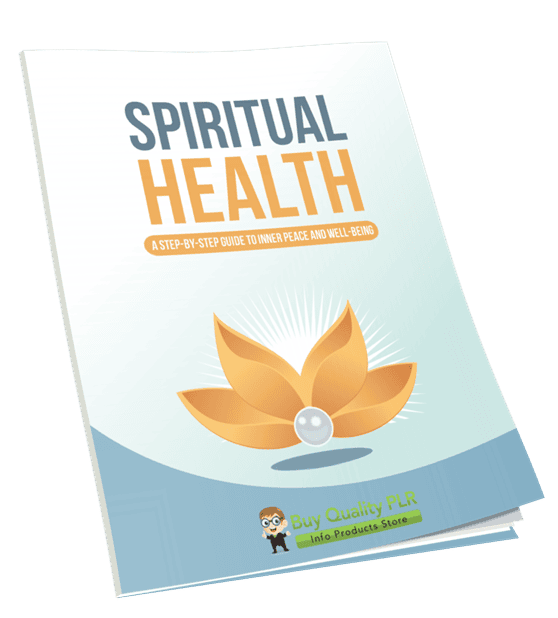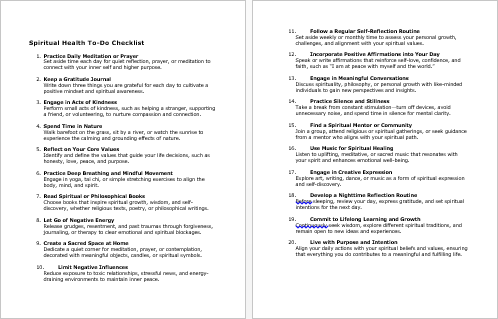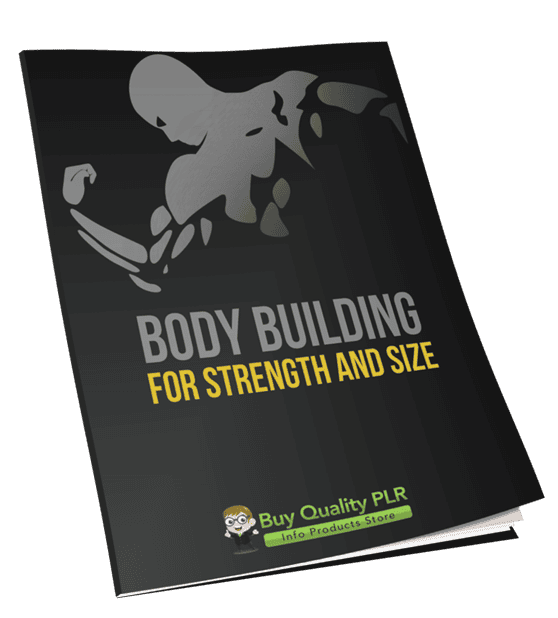
Spiritual Health PLR Course 24k Words
in Health PLR , Health PLR eBooks , PLR Checklists , PLR eBooks , PLR eCourses , PLR List Building Reports , Premium PLR , Premium PLR eBooks , Premium PLR Reports , Premium White Label Brandable PLR Coaching Courses , Private Label Rights Products , Self Discipline PLR , Self Help PLR , Self Help PLR eBooks , Wellness PLR , Wellness PLR eBooksChoose Your Desired Option(s)
has been added to your cart!
have been added to your cart!
#spiritualhealth #wellnessmarketing #selfgrowth #mindbodysoul #plrcontent #personaldevelopment #plrcourse #healthandwellness
Spiritual Health PLR Course – Transform Your Inner Well-Being
A Step-by-Step Guide to Inner Peace and Well-Being
Unlock the secrets to living a balanced, purposeful, and spiritually aligned life with our comprehensive Spiritual Health PLR Course. Designed for personal development enthusiasts, coaches, wellness bloggers, and digital entrepreneurs, this course offers actionable guidance to cultivate inner peace, strengthen your connection with yourself, and live a life filled with meaning and joy.
Whether you want to create products for your audience, launch a membership site, or build a digital wellness business, this ready-to-use PLR course provides everything you need.
Presenting…
Spiritual Health PLR Course 24k Words
Why Spiritual Health Matters
In today’s fast-paced world, many people feel disconnected, stressed, or out of alignment with their true purpose. Spiritual health is more than just meditation or prayer—it’s a holistic approach that nurtures your mind, body, and soul.
With this PLR course, your customers can:
- Reduce stress and cultivate calmness
- Deepen self-awareness and emotional resilience
- Strengthen their connection with their beliefs and intuition
- Implement daily habits that enhance life satisfaction
- Create a long-lasting, spiritually aligned lifestyle
Course Highlights
This 23,393-word step-by-step course is divided into 5 easy-to-follow modules, each containing 4 actionable steps. Every module is structured to provide clarity, practical exercises, and insight for both beginners and advanced learners.
Here’s what your customers will learn:
Module 1: Understanding Spiritual Health
Goal: Build a strong foundation for your spiritual journey.
- Step 1: What is Spiritual Health?
Understand the essence of spiritual well-being and how it differs from religion while exploring its universal benefits. - Step 2: The Mind-Body-Spirit Connection
Learn how thoughts, emotions, and physical health are interconnected and why balance is key for lasting spiritual growth. - Step 3: Identifying Your Spiritual Needs
Reflect on what truly fulfills you and discover ways to align your daily habits with your personal spiritual requirements. - Step 4: Setting Intentions for Your Spiritual Journey
Create clear, actionable intentions to guide your spiritual practice and track your progress effectively.
Module 2: Cultivating Inner Peace
Goal: Calm your mind and create emotional harmony.
- Step 1: Practicing Mindfulness
Simple mindfulness techniques that reduce stress and cultivate a state of present-moment awareness. - Step 2: Developing a Meditation Habit
Begin a daily meditation practice, even for busy beginners, to improve focus and spiritual awareness. - Step 3: Managing Stress and Negative Energy
Discover strategies to release negativity and maintain emotional balance in everyday life. - Step 4: The Power of Gratitude and Acceptance
Implement daily gratitude practices to shift perspectives and embrace life with calm and appreciation.
Module 3: Strengthening Your Spiritual Connection
Goal: Deepen your relationship with yourself, nature, and the universe.
- Step 1: Connecting with Your Inner Self
Techniques for self-reflection, journaling, and contemplation to tune into your inner wisdom. - Step 2: Exploring Your Spiritual Beliefs
Understand your beliefs, whether religious or personal, to find meaning and direction. - Step 3: Finding Spiritual Connection in Nature
Use the power of nature to ground yourself and enhance spiritual well-being. - Step 4: Tapping into Your Intuition
Develop trust in your inner guidance for decisions that align with your purpose.
Module 4: Spiritual Practices for Daily Life
Goal: Incorporate spiritual habits seamlessly into your everyday routine.
- Step 1: Creating a Morning Spiritual Routine
Start your day with meditation, affirmations, or prayer to set a positive tone. - Step 2: Practicing Acts of Kindness and Compassion
Simple acts that nurture both your soul and those around you. - Step 3: Using Breathwork and Movement for Spiritual Health
Integrate yoga, deep breathing, and mindful movement into your lifestyle. - Step 4: Ending the Day with Reflection and Gratitude
Evening practices to unwind, review the day, and maintain balance.
Module 5: Living a Spiritually Aligned Life
Goal: Align your lifestyle with your values and purpose.
- Step 1: Identifying Your Core Values
Clarify what truly matters to guide spiritually aligned decision-making. - Step 2: Letting Go of What No Longer Serves You
Release limiting beliefs, toxic habits, and relationships that impede spiritual growth. - Step 3: Finding Your Life’s Purpose
Discover your passions and strengths to live a meaningful life. - Step 4: Committing to a Lifelong Spiritual Journey
Create a sustainable plan to continue growth and maintain spiritual well-being long-term.
Bonus Materials Included
Your customers also get these valuable resources:
- Spiritual Health – Checklist: 475 words of actionable steps for daily implementation
- Spiritual Health – FAQs: 736 words addressing common challenges and questions
- Spiritual Health – Salespage: 847 words of ready-to-use promotional content
These resources make it easy to launch your PLR product immediately, without spending hours creating content from scratch.
How Buyers Can Use and Profit from This PLR Course
With Spiritual Health PLR, you can create multiple income streams:
- Sell as a Complete Course
Offer it as a full digital course on platforms like Teachable, Kajabi, or Udemy. - Break It Into Smaller Products
Turn modules into individual guides, reports, or mini-courses to sell for $10–$20 each. - Bundle With Other PLR Products
Combine with other health, wellness, or self-development PLR products for premium bundles ($47–$97). - Membership Site Content
Use the course to create a spiritual or personal development membership site with recurring revenue. - Create Multimedia Versions
Convert the content into audio files, videos, slideshows, or workbooks for added value. - Lead Magnets and Email Series
Use excerpts for newsletters, lead magnets, or email autoresponders to grow your email list. - Flip the Product Online
Rebrand, add value, and resell the site or content for a high-ticket one-time sale.
Why Buy This PLR Course
- Done-for-You Content: Over 22,000 words of high-quality, professionally written PLR content.
- Editable & Brandable: Add your logo, colors, and voice to make it uniquely yours.
- Highly Valuable Niche: Spiritual health is a growing market with millions seeking guidance.
- Multiple Revenue Streams: Sell it as courses, guides, memberships, or digital downloads.
- Quick to Launch: Everything you need is included—no extra content creation required.
License Terms
Permissions:
- Sell, edit, and rebrand the content.
- Use as standalone courses, reports, or part of larger bundles.
- Convert into videos, audios, or membership content.
- Use as lead magnets or blog content.
Restrictions:
- Do not pass on PLR rights to your customers.
- Do not give away the full product for free in its original form.
- Maximum affiliate commission is 75% if used in affiliate promotions.
Take Action Today!
Give your audience the gift of inner peace, purpose, and spiritual growth with this ready-to-use Spiritual Health PLR Course. Perfect for wellness entrepreneurs, bloggers, coaches, and anyone looking to create digital products in the thriving personal development niche.
Your next steps:
- Purchase the PLR course and download immediately.
- Customize and brand it for your audience.
- Start selling, building a membership site, or using it to grow your email list.
Start helping people live their best spiritual lives today—and profit from a high-demand, evergreen niche.
has been added to your cart!
have been added to your cart!
Here A Sample of Spiritual Health PLR Course
Spiritual health is about finding balance, purpose, and inner peace in your life. In this course, we’ll explore ways to nurture your spiritual well-being, strengthen your connection with yourself and the world around you, and create daily habits that lead to a more fulfilling life.
This course is divided into 5 modules, each with 4 simple steps that will guide you toward deepening your spiritual journey. Let’s begin!
Module 1: Understanding Spiritual Health
Before we dive into practices, it’s important to understand what spiritual health really means and how it impacts your overall well-being.
Step 1: What is Spiritual Health?
Spiritual health is often misunderstood. Many people assume that being spiritually healthy means following a particular religion or belief system, but in reality, spiritual health is much broader and deeply personal. It is about feeling a sense of connection, purpose, and inner peace—whether that comes through religion, personal beliefs, nature, or self-reflection.
In this step, we will explore:
✔ The true meaning of spiritual health
✔ The difference between spirituality and religion
✔ The key components of spiritual well-being
✔ How spiritual health impacts your overall life
By the end of this step, you will have a clear understanding of what spiritual health means for you personally and how it fits into your life.
1. Understanding the Meaning of Spiritual Health
At its core, spiritual health is about:
✔ Feeling a deep sense of meaning and purpose in life
✔ Feeling connected—to yourself, to others, to nature, or to a higher power
✔ Experiencing inner peace and balance, even during difficult times
✔ Living in alignment with your values and personal beliefs
Spiritual health helps you navigate life’s challenges with resilience and clarity. It is what gives people a sense of direction and the ability to stay grounded in an ever-changing world.
2. The Difference Between Spirituality and Religion
Are Spirituality and Religion the Same?
Many people confuse spirituality with religion, but they are not necessarily the same. Religion involves structured beliefs, rituals, and practices shared by a group of people, often centered around a deity or divine force. Spirituality, on the other hand, is more personal—it is about your individual journey to understanding yourself and the world around you.
Here’s how they differ:
| Aspect | Spirituality | Religion |
| Definition | A personal journey of inner growth and connection | An organized system of beliefs, rituals, and worship |
| Flexibility | Highly personal and flexible | Follows specific doctrines and traditions |
| Community | Can be practiced alone or with others | Often involves belonging to a religious group |
| Goal | Finding meaning, peace, and self-awareness | Worshiping, following religious teachings, and spiritual discipline |
Can You Be Spiritual Without Being Religious?
Absolutely! Many people find spiritual fulfillment in nature, meditation, self-reflection, art, or human connections—without following a specific religion. Others find spiritual strength in their religious faith. Both paths are valid and deeply personal.
Take a moment to reflect:
✔ Do you feel more connected through a religious practice or personal reflection?
✔ What activities bring you a sense of peace and purpose?
Your answers will help you understand your own spiritual health.
3. The Key Components of Spiritual Health
Spiritual health consists of several elements that contribute to a balanced and fulfilling life. Below are the four key components:
1. Meaning & Purpose
People who are spiritually healthy often feel that life has meaning beyond daily tasks. This can come from:
✔ Helping others
✔ Creating something meaningful (art, music, writing)
✔ Contributing to a greater cause
✔ Reflecting on personal growth
When life has purpose, you feel more fulfilled and motivated.
2. Connection
Spiritual health involves a sense of connection—to yourself, to others, to nature, or to a higher power. Ask yourself:
✔ Do I feel connected to something beyond myself?
✔ Do I take time to nurture relationships and appreciate the world around me?
Connection provides support and perspective, reducing feelings of loneliness and isolation.
3. Inner Peace & Resilience
Life is full of challenges, but spiritual health allows you to:
✔ Stay calm during difficult times
✔ Accept uncertainty with grace
✔ Find comfort in your beliefs and values
This inner peace can come from meditation, prayer, mindfulness, or simply being present in the moment.
4. Living by Your Values
Spiritual health means living in alignment with your core beliefs and values. It means making choices that reflect what truly matters to you, such as:
✔ Integrity
✔ Kindness
✔ Compassion
✔ Honesty
Living by your values brings a sense of fulfillment and authenticity.
4. How Spiritual Health Affects Your Life
Spiritual health impacts many areas of your well-being, including:
1. Mental Health
✔ Reduces stress, anxiety, and depression
✔ Helps you stay grounded during challenges
✔ Promotes positive thinking and resilience
2. Emotional Well-Being
✔ Increases self-awareness and self-acceptance
✔ Strengthens emotional intelligence
✔ Encourages gratitude and contentment
3. Physical Health
✔ Lowers blood pressure and improves heart health
✔ Boosts the immune system
✔ Encourages healthy lifestyle choices
4. Relationships
✔ Strengthens empathy and understanding
✔ Helps resolve conflicts with compassion
✔ Builds deeper and more meaningful connections
Reflection Exercise:
✔ Think about a time when you felt spiritually connected or at peace.
✔ What were you doing?
✔ How did it impact your mood and mindset?
Conclusion: Defining What Spiritual Health Means for You
Spiritual health is not a one-size-fits-all concept. It looks different for everyone. Some find it through religion, others through nature, creativity, or meditation. The key is to discover what makes you feel connected, purposeful, and at peace.
Key Takeaways
✔ Spiritual health is about connection, purpose, and inner peace.
✔ It is different from religion—though religion can be a part of it.
✔ It improves mental, emotional, and physical well-being.
✔ Each person’s spiritual journey is unique and personal.
Step 2: The Mind-Body-Spirit Connection
Spiritual health is deeply interconnected with both mental and physical well-being. When one area is out of balance, it can affect the others. Understanding the mind-body-spirit connection allows you to nurture your overall health in a way that promotes inner peace, emotional stability, and physical vitality.
In this step, we will explore:
✔ How the mind, body, and spirit influence each other
✔ Scientific and philosophical perspectives on their connection
✔ The impact of stress, emotions, and mindset on spiritual health
✔ Practical ways to achieve balance for overall well-being
By the end of this step, you will have a deeper awareness of how to strengthen your spiritual health by taking care of your mind and body together.
1. Understanding the Mind-Body-Spirit Connection
The mind-body-spirit connection refers to the way our thoughts, emotions, physical health, and spiritual well-being are intertwined. You are not just a physical being—you are also a mental and spiritual being, and all these aspects influence each other.
Let’s break it down:
✔ Mind (Thoughts & Emotions): The way you think and feel affects both your body and spirit. Negative thoughts and stress can manifest as physical illness, while positive thinking can enhance emotional and spiritual health.
✔ Body (Physical Health): Your physical condition influences your emotions and spiritual state. Poor diet, lack of sleep, and stress weaken not only your body but also your mental clarity and spiritual energy.
✔ Spirit (Inner Peace & Purpose): Your sense of connection, purpose, and inner harmony affects both your mental and physical well-being. A strong spiritual foundation can help you handle stress, illness, and emotional challenges more effectively.
Imagine a chair with three legs—mind, body, and spirit. If one leg is weak or missing, the chair becomes unstable. Balance is essential.
2. Scientific and Philosophical Perspectives on the Connection
This concept is not just philosophical—it is also supported by science. Let’s explore both perspectives.
Scientific Viewpoint
Modern research confirms that mental and emotional states directly affect physical health:
✔ Stress & Health: Chronic stress raises cortisol levels, weakens the immune system, and increases the risk of disease. However, mindfulness, meditation, and spiritual practices have been proven to lower stress and promote healing.
✔ Neuroplasticity: The brain can change and rewire itself based on our thoughts and beliefs. Positive affirmations, gratitude, and spiritual practices improve brain function and mental health.
✔ Holistic Medicine: Many healthcare professionals now recognize the power of holistic healing, integrating mind-body practices like yoga, meditation, and deep breathing into traditional medicine.
Philosophical & Cultural Perspectives
The mind-body-spirit connection has been a core belief in many cultures for centuries:
✔ Ancient Eastern Traditions: In Ayurveda and Traditional Chinese Medicine, the balance of mind, body, and spirit is key to health. Practices like yoga and acupuncture are based on this principle.
✔ Western Psychology: Carl Jung and Viktor Frankl emphasized the importance of spiritual well-being in psychological health, highlighting the role of meaning and purpose in healing.
✔ Indigenous Wisdom: Many indigenous cultures around the world recognize that mental, physical, and spiritual well-being are interconnected, emphasizing rituals, meditation, and connection with nature.
Understanding this connection from both scientific and spiritual viewpoints can help you embrace a holistic approach to health and well-being.
3. The Impact of Stress, Emotions, and Mindset on Spiritual Health
Your thoughts, emotions, and stress levels directly impact your spiritual health. Let’s look at how:
1. Stress & Spiritual Disconnection
✔ Stress creates mental noise, making it difficult to feel spiritually connected.
✔ When overwhelmed, people often lose sight of purpose and inner peace.
✔ High stress weakens the body, leading to fatigue, headaches, and tension—further disconnecting you from spiritual well-being.
Solution:
✔ Engage in mindful breathing, meditation, or quiet reflection to clear mental clutter.
✔ Find moments of stillness daily to reconnect with yourself and your spiritual beliefs.
2. Negative Emotions & Energy Blockages
✔ Emotions like anger, guilt, and sadness can create energy blockages, disrupting both mental and physical health.
✔ Holding onto negative emotions can cause stress-related illnesses and prevent spiritual growth.
Solution:
✔ Practice emotional release through journaling, deep breathing, or talking with someone you trust.
✔ Accept emotions as they come but learn to let go instead of dwelling on them.
3. Mindset & Spiritual Resilience
✔ A positive and open mindset enhances spiritual connection.
✔ People with a growth mindset are more adaptable, resilient, and spiritually grounded.
✔ Practicing gratitude and self-reflection can shift your mindset toward peace and fulfillment.
Solution:
✔ Replace negative self-talk with affirmations and self-compassion.
✔ Reflect on daily blessings and lessons to maintain a positive spiritual outlook.
4. Practical Ways to Achieve Mind-Body-Spirit Balance
To strengthen your mind-body-spirit connection, practice daily habits that nurture all three areas.
1. Mental Well-Being Practices
✔ Mindfulness & Meditation: Spend 5–10 minutes daily in stillness to calm your mind.
✔ Self-Reflection: Journal your thoughts, experiences, and lessons learned.
✔ Gratitude Practice: List three things you are grateful for each day.
2. Physical Health Practices
✔ Movement & Exercise: Yoga, walking in nature, or stretching helps release stress.
✔ Healthy Nutrition: Eat foods that nourish your body and mind. Avoid processed junk food that lowers energy levels.
✔ Quality Sleep: A well-rested body supports better mental and spiritual health.
3. Spiritual Connection Practices
✔ Nature Connection: Spend time outdoors to feel connected to something greater.
✔ Acts of Kindness: Helping others strengthens your spiritual fulfillment.
✔ Silence & Reflection: Take time to pause, breathe, and just “be.”
Conclusion: The Power of a Balanced Life
When your mind, body, and spirit work in harmony, you feel:
✔ Mentally clear and emotionally stable
✔ Physically energized and free from stress
✔ Spiritually connected and fulfilled
Your spiritual health is not separate from your mental and physical well-being—it is deeply connected. By nurturing all three, you create a life of balance, peace, and purpose.
Step 3: Identifying Your Spiritual Needs
Spiritual health is deeply personal. What fulfills one person may not resonate with another. Your spiritual journey is unique to you, shaped by your beliefs, experiences, and inner values. To build a meaningful and fulfilling spiritual practice, you first need to identify what nourishes your soul and brings you inner peace.
In this step, we will explore:
✔ What spiritual needs are and why they matter
✔ How to recognize your personal spiritual needs
✔ The role of reflection and self-awareness in spiritual growth
✔ Practical exercises to help you discover what brings you fulfillment and peace
By the end of this step, you will have a clearer understanding of what aligns you with your true self and how to nurture your spiritual well-being.
1. What Are Spiritual Needs? Why Do They Matter?
Spiritual needs refer to the inner desires and experiences that give your life meaning, purpose, and connection. They go beyond religious practices; they are about feeling whole, fulfilled, and at peace with yourself and the world around you.
Everyone has different spiritual needs. Some people find fulfillment in quiet meditation, while others feel connected through community, nature, or creativity. Identifying your spiritual needs helps you:
✔ Find clarity in what truly matters to you
✔ Develop a spiritual practice that feels genuine and fulfilling
✔ Improve emotional well-being and reduce feelings of emptiness
✔ Strengthen your connection to yourself, others, and the universe
Ignoring your spiritual needs can lead to:
✔ A sense of disconnection or lack of purpose
✔ Stress, anxiety, or emotional imbalance
✔ A feeling of being lost, unfulfilled, or unmotivated
Recognizing and fulfilling your spiritual needs enhances all areas of life, from mental and emotional health to relationships and overall well-being.
2. How to Recognize Your Personal Spiritual Needs
Spiritual needs vary from person to person. To identify yours, consider the following four key areas of spiritual fulfillment:
1. Connection
Ask yourself: What makes me feel connected to something greater than myself?
✔ Do you feel spiritually connected when spending time in nature?
✔ Does prayer or meditation help you feel at peace?
✔ Do you find a sense of belonging in community or relationships?
For some, connection comes from a higher power or religion. For others, it is found in meaningful conversations, art, or music.
2. Purpose & Meaning
Ask yourself: What gives my life meaning?
✔ What activities make you feel fulfilled and inspired?
✔ Do you enjoy helping others, creating art, or learning new things?
✔ Do you feel a sense of purpose when working toward a goal or serving others?
Some people find purpose in their career, volunteer work, or personal projects, while others discover it in faith, traditions, or self-discovery.
3. Inner Peace & Healing
Ask yourself: What brings me inner peace?
✔ Do you feel at peace when practicing mindfulness or gratitude?
✔ Do certain practices like journaling, prayer, or breathing exercises help you feel grounded?
✔ Does letting go of negative emotions and past hurts make you feel lighter?
Inner peace often comes from self-acceptance, forgiveness, and the ability to live in the present moment.
4. Growth & Exploration
Ask yourself: How do I grow spiritually?
✔ Do you enjoy reading about philosophy, spirituality, or personal development?
✔ Are you drawn to traveling, experiencing new cultures, or learning from different traditions?
✔ Do you seek personal transformation through meditation, therapy, or life coaching?
Spiritual growth involves continuous learning, self-awareness, and personal evolution.
By reflecting on these four areas, you can start recognizing what nourishes your soul and supports your well-being.
3. The Role of Reflection and Self-Awareness in Spiritual Growth
Identifying your spiritual needs requires introspection and honest self-reflection. The more aware you are of your inner world, the better you can align with what brings you fulfillment.
1. Pay Attention to What Brings You Joy
Think about moments when you felt most at peace, inspired, or connected.
✔ What were you doing?
✔ Who were you with?
✔ How did it make you feel?
These moments reveal clues about what resonates with your spiritual core.
2. Recognize What Drains You Spiritually
Just as some experiences nourish your spirit, others may leave you feeling drained, disconnected, or unsettled.
✔ Do certain environments or situations make you feel uneasy or unfulfilled?
✔ Are there habits or routines that feel misaligned with your true self?
✔ Do you feel exhausted after certain conversations or activities?
Eliminating or minimizing these influences can create more space for what truly fulfills you.
3. Listen to Your Inner Voice
Your intuition is a powerful guide. Take time to listen to your thoughts and emotions without judgment.
✔ What does your heart tell you about your path?
✔ Do certain ideas or dreams keep resurfacing in your mind?
✔ Do you feel drawn to a particular spiritual practice or belief system?
Journaling, meditation, and deep contemplation can help you tune into your inner wisdom.
4. Practical Exercises to Discover Your Spiritual Needs
Here are some practical exercises to help you gain clarity on what fulfills you spiritually:
1. Journaling Reflection
Take a notebook and answer the following questions:
✔ What makes me feel deeply connected to myself and the world?
✔ What activities bring me the most joy and peace?
✔ When do I feel most fulfilled?
✔ What drains my energy or feels misaligned with my true self?
Re-reading your answers will reveal patterns and insights about your spiritual needs.
2. Silent Observation Exercise
Find a quiet place where you won’t be disturbed. Sit comfortably, close your eyes, and reflect:
✔ What emotions arise when I think about my spiritual life?
✔ What thoughts or memories bring me feelings of peace and purpose?
✔ What is missing in my spiritual well-being right now?
Observing your inner reactions can help you recognize areas that need attention.
3. Life Map Visualization
Draw a timeline of your life and mark the moments when you felt most connected, happy, or at peace.
✔ Look for common themes in these moments.
✔ Identify what made them meaningful.
✔ Use these insights to shape your current spiritual practices.
4. Trying New Spiritual Practices
If you’re unsure about what nourishes your spirit, experiment with different activities:
✔ Mindfulness & Meditation – Focus on deep breathing and present-moment awareness.
✔ Nature Connection – Spend time outdoors, feeling the energy of nature.
✔ Creative Expression – Paint, write, or play music to explore your inner self.
✔ Acts of Kindness – Volunteer or help someone in need to experience fulfillment.
✔ Sacred Rituals – Try prayer, chanting, or traditional ceremonies to see what resonates.
Through trial and reflection, you will discover which practices align with your spiritual essence.
Conclusion: Creating a Spiritual Blueprint
Your spiritual needs are unique, and there is no “one-size-fits-all” approach. The key is to listen to your heart, explore different paths, and honor what feels right for you.
✔ Reflect on what fulfills you – Identify the activities and experiences that bring you inner peace and connection.
✔ Remove what drains you – Let go of habits and influences that do not support your spiritual well-being.
✔ Stay open to growth – Be willing to explore, learn, and evolve on your journey.
By identifying your spiritual needs, you take the first step toward a life of greater balance, meaning, and inner harmony.
Step 4: Setting Intentions for Your Spiritual Journey
Spiritual growth is not something that happens by accident—it requires conscious effort, reflection, and a clear sense of direction. Setting intentions helps you focus your energy and attention on what truly matters in your spiritual journey. Before you begin, it’s important to ask yourself:
✔ What do I hope to gain from this course?
✔ What aspects of my spiritual health do I want to strengthen?
✔ How will I measure my growth and transformation?
In this step, we will explore:
✔ The difference between intentions and goals in spiritual growth
✔ How to set meaningful and personal intentions
✔ Ways to track your progress to stay committed
✔ Practical exercises to define your spiritual journey
By the end of this step, you will have a clear roadmap for your spiritual development and a deeper understanding of how to stay aligned with your intentions.
1. Understanding the Power of Intentions vs. Goals
Many people confuse intentions with goals. While both are important, they serve different purposes in spiritual development.
What Is an Intention?
✔ An intention is a guiding principle for how you want to live, feel, or grow.
✔ It is about being present and aligning your actions with your deeper values.
✔ Intentions focus on your internal experience rather than external achievements.
For example, an intention could be:
✔ “I want to cultivate more inner peace and presence in my daily life.”
✔ “I intend to connect more deeply with my true self and values.”
What Is a Goal?
✔ A goal is a specific measurable outcome you want to achieve.
✔ Goals are about future results, such as completing a task or reaching a milestone.
✔ While goals can be part of your spiritual journey, they don’t define your spiritual well-being.
For example, a goal could be:
✔ “I will meditate for 10 minutes every day for the next 30 days.”
✔ “I will read one spiritual book per month.”
Why Are Intentions More Important in Spiritual Growth?
✔ Intentions align your mindset and energy with your spiritual aspirations.
✔ Unlike goals, intentions do not focus on success or failure—they focus on who you are becoming.
✔ They help you cultivate a consistent spiritual practice rather than chasing rigid expectations.
Intentions set the foundation for all spiritual practices, allowing you to be more flexible, self-aware, and open to growth.
2. How to Set Meaningful and Personal Intentions
Your intentions should be authentic to you. They should reflect your deepest desires for growth, peace, and connection. To create powerful intentions, follow these steps:
Step 1: Reflect on Your Current Spiritual State
Before setting an intention, take time to assess where you are right now. Ask yourself:
✔ What is missing in my spiritual well-being?
✔ When do I feel most connected to myself and the world?
✔ What areas of my life feel out of balance?
✔ What emotions do I want to experience more often (peace, joy, gratitude, clarity)?
Your reflections will help you identify the themes that are most important for your growth.
Step 2: Identify Your Core Spiritual Aspirations
Think about the qualities, experiences, and changes you want to cultivate in your spiritual journey. Do you want to:
✔ Strengthen your connection with your inner self or a higher power?
✔ Experience more mindfulness and presence in daily life?
✔ Let go of negative emotions or limiting beliefs?
✔ Develop a sense of purpose and meaning?
Clarifying your core aspirations will guide you in setting an intention that truly resonates.
Step 3: Write Your Spiritual Intention in the Present Tense
Your intention should feel affirmative, personal, and empowering. Instead of saying, “I want to be more peaceful,” reframe it as:
✔ “I am cultivating inner peace and presence in every moment.”
✔ “I embrace self-love and spiritual growth with an open heart.”
✔ “I am deeply connected to my true purpose and values.”
Writing your intention in the present tense helps reprogram your mindset and align your daily actions with your spiritual aspirations.
Step 4: Keep Your Intentions Simple and Focused
It’s better to focus on one or two strong intentions rather than setting too many at once. Keep your intention clear, direct, and easy to remember.
✔ Good Example: “I live each day with gratitude and presence.”
✖ Less Effective Example: “I want to be a better person, feel happier, meditate daily, read spiritual books, and connect with others.”
A simple intention is easier to integrate into your daily life and keeps your focus strong.
3. Tracking Your Progress and Staying Committed
Once you set your intention, it’s important to stay mindful of it throughout your journey. Here are some ways to stay aligned:
1. Morning and Evening Reflection
✔ Each morning, take a moment to repeat your intention to yourself.
✔ Each evening, reflect on how you lived your intention during the day.
Example: If your intention is “I practice patience and kindness in all situations,” think about moments in the day where you embodied this and where you can improve.
2. Journaling Your Spiritual Journey
✔ Keep a spiritual journal where you write your thoughts, experiences, and insights.
✔ Track any changes in your emotions, mindset, and daily habits.
✔ If you feel disconnected from your intention, explore why and how to realign.
Journaling keeps your spiritual growth visible and helps you see how far you’ve come.
3. Daily Affirmations and Reminders
✔ Write your intention on a sticky note and place it somewhere visible.
✔ Set a daily reminder on your phone to take a deep breath and reconnect with your intention.
✔ Use affirmations to reinforce your commitment:
Example Affirmations:
✔ “I am aligned with my spiritual journey and trust the process.”
✔ “I invite peace, love, and wisdom into my life every day.”
4. Meditation and Visualization
✔ Spend a few minutes each day meditating on your intention.
✔ Visualize yourself living in alignment with your spiritual values.
✔ Imagine how it feels to embody your intention in real-life situations.
This practice strengthens your focus and makes your spiritual transformation more tangible.
4. Practical Exercises to Define Your Spiritual Journey
To deepen your understanding of your intentions, try these exercises:
Exercise 1: The “Why” Clarity Method
✔ Write down your spiritual intention.
✔ Ask yourself “Why is this important to me?”
✔ Repeat this question five times, each time digging deeper into your true motivation.
Example:
✔ Intention: “I cultivate self-love and acceptance.”
✔ Why? Because I want to stop being so critical of myself.
✔ Why? Because self-criticism makes me feel unworthy and unhappy.
✔ Why? Because I want to experience inner peace and joy.
✔ Why? Because I deserve to love myself unconditionally.
✔ Why? Because self-love will help me live a more meaningful and fulfilling life.
By going deeper, you uncover the real reasons behind your spiritual aspirations.
Exercise 2: Writing a Spiritual Commitment Letter
Write a letter to your future self, committing to your spiritual journey. Include:
✔ Your intention and why it matters
✔ The changes you hope to experience
✔ Encouraging words for yourself during challenges
Re-read this letter whenever you need motivation and guidance.
Exercise 3: Guided Meditation for Setting Intentions
Spend 5-10 minutes in a quiet space:
✔ Close your eyes and focus on your breathing.
✔ Imagine yourself embodying your spiritual intention.
✔ Feel the emotions of being aligned with your purpose.
This practice strengthens your connection to your intention.
Conclusion: Your Spiritual Roadmap Begins Here
Setting clear intentions ensures that your spiritual journey is purposeful and fulfilling. By identifying what you truly seek and committing to daily practices, you create a path toward growth, peace, and transformation.
✔ Define your intention with clarity and authenticity.
✔ Stay mindful of it daily through reflection and practice.
✔ Be patient and open to the journey—it’s about progress, not perfection.
We’re also giving these extra bonuses
Spiritual Health – Checklist
Spiritual Health – FAQs

Spiritual Health – Salespage Content

Package Details:
Word Count: 22 393 Words
Number of Pages: 104
Spiritual Health – Bonus Content
Checklist
Word Count: 475 words
FAQs
Word Count: 736 words
Salespage Content
Word Count: 847 words
Total Word Count: 24 451 Words
Your PLR License Terms
PERMISSIONS: What Can You Do With These Materials?
Sell the content basically as it is (with some minor tweaks to make it “yours”).
If you are going to claim copyright to anything created with this content, then you must substantially change at 75% of the content to distinguish yourself from other licensees.
Break up the content into small portions to sell as individual reports for $10-$20 each.
Bundle the content with other existing content to create larger products for $47-$97 each.
Setup your own membership site with the content and generate monthly residual payments!
Take the content and convert it into a multiple-week “eclass” that you charge $297-$497 to access!
Use the content to create a “physical” product that you sell for premium prices!
Convert it to audios, videos, membership site content and more.
Excerpt and / or edit portions of the content to give away for free as blog posts, reports, etc. to use as lead magnets, incentives and more!
Create your own original product from it, set it up at a site and “flip” the site for megabucks!
RESTRICTIONS: What Can’t You Do With These Materials?
To protect the value of these products, you may not pass on the rights to your customers. This means that your customers may not have PLR rights or reprint / resell rights passed on to them.
You may not pass on any kind of licensing (PLR, reprint / resell, etc.) to ANY offer created from ANY PORTION OF this content that would allow additional people to sell or give away any portion of the content contained in this package.
You may not offer 100% commission to affiliates selling your version / copy of this product. The maximum affiliate commission you may pay out for offers created that include parts of this content is 75%.
You are not permitted to give the complete materials away in their current state for free – they must be sold. They must be excerpted and / or edited to be given away, unless otherwise noted. Example: You ARE permitted to excerpt portions of content for blog posts, lead magnets, etc.
You may not add this content to any part of an existing customer order that would not require them to make an additional purchase. (IE You cannot add it to a package, membership site, etc. that customers have ALREADY paid for.)
Share Now!













